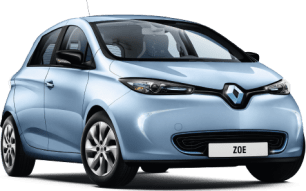If you’ve owned the same old car for years and you’re setting foot in an MG3 for the first time, you’ll probably feel amazed that you can get an interior with interesting finishes, a high-tech screen and decent materials at this price point.
Earlier versions of the MG3 were nowhere near as good inside as the current model, which has been on sale since 2018. It’s not perfect, but there are plenty of things to like.
The seats offer plenty of adjustment, including a huge amount of height adjustment for shorter drivers. The seat is comfortable, though some drivers might find it hard to get the right position: there is no reach adjustment for the steering wheel (only rake adjust), and you can’t adjust the seatbelt height, either.
I really like the seat trim which is a broad tartan design (with “synthetic leather” bolsters and contrast stitching in the top-spec Excite), mirrored by an etched tartan aluminium trim piece on the dashboard - it looks really smart, even if my OCD radar was set off by the fact the trim wasn’t aligned to match perfectly between the cushion sections. Take a look at the interior pictures to see what I mean.
There are some really nice elements to the cabin. Things like the 'lock' and 'unlock' button on the driver’s door, which looks like it has been stolen directly from Audi’s parts catalogue. The same can be said for the speedo instrument font.
There’s no doubt that it’s built to a price, but it doesn’t feel anywhere near as cheap as you might expect. We’ve criticised Audi, VW and Skoda for cutting costs with hard plastic trims on doors and dashboards, and the MG has plenty of hard plastics, too - but it’s expected at this price, not double it.
There’s a standard 8.0-inch touchscreen media system with AM/FM radio and Bluetooth phone and audio streaming, plus USB connectivity and smartphone mirroring - meaning you get Apple CarPlay, essentially negating the need for sat nav if you use an iPhone. You can option a GPS navigation system on the Core model, but satellite navigation comes standard on the Excite. There's no Android Auto mirroring available at all, though.
In previous models from the SAIC stable - including the LDV T60, and MG ZS - I had troubles with the media screen, but the version in the MG3 Excite I drove was quick and problem free, even when disconnecting and reconnecting my phone multiple times.
There are other little things that could be improved, like the fact the trip meter is difficult to navigate, and there’s no digital speedometer. Also, the digital climate control in the Excite model shows up on the media screen, though by way of a graphic rather than a temperature number. In the base model Core there’s a simpler manual a/c system.
The steering wheel has a part leather trim with perforated edges which makes it look and feel a little bit sporty – and it has a flat bottom as well, which will appeal to the sporty-minded buyer. There are stereo and cruise control buttons on the wheel, but the stalks behind are “back to front”, with the left stalk for indicators and lights, and the right for wipers.
As for storage, up front there is a single cup holder between the seats, a couple of small storage sections including a trench for a wallet, and another storage section in front of the gear selector - that’s where the MG3’s single USB port is, too.
The front door storage includes bottle holders, and there are soft padded elbow pads on the front doors - which is more than we can say for some of those aforementioned Euro brands.
With the driver’s seat set in my position (I’m 182cm tall), I had enough back seat space to be comfortable. There was enough knee room and toe room, and reasonable headroom if I sat perfectly still - although the slightest tilt of my head to the outer side of the car saw my noggin contact the headlining. Rear seat comfort is okay - the backrest is a firm, but there’s good visibility out the windows. There are dual ISOFIX child seat anchor points, and three top-tether points for baby seats.
In the back the storage is minimal. There are two map pockets, but no door pockets, and there’s no flip-down centre armrest with cupholders. But there is one large pocket in front of the middle-seat rear passenger which would do for a bottle. The back seat also misses out on soft elbow pads on the doors.
Boot space is good for a car in this size segment. You’ll only really do better if you buy a Honda Jazz or Suzuki Baleno, as the MG3 offers a deep and boxy cargo zone, with a cargo capacity of 307 litres to the cargo cover.
Need more luggage capacity? The back seats fold down in a 60:40 split, alleviating 1081L of space - though the load-through is limited as the seats don’t fold completely flat. Or you could fit a roof rack.

